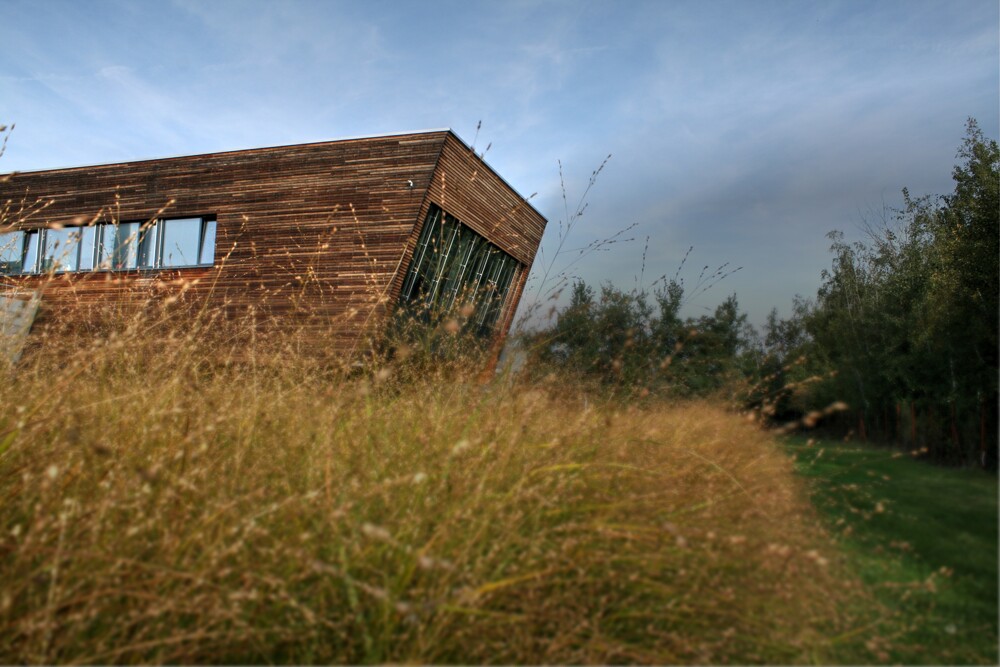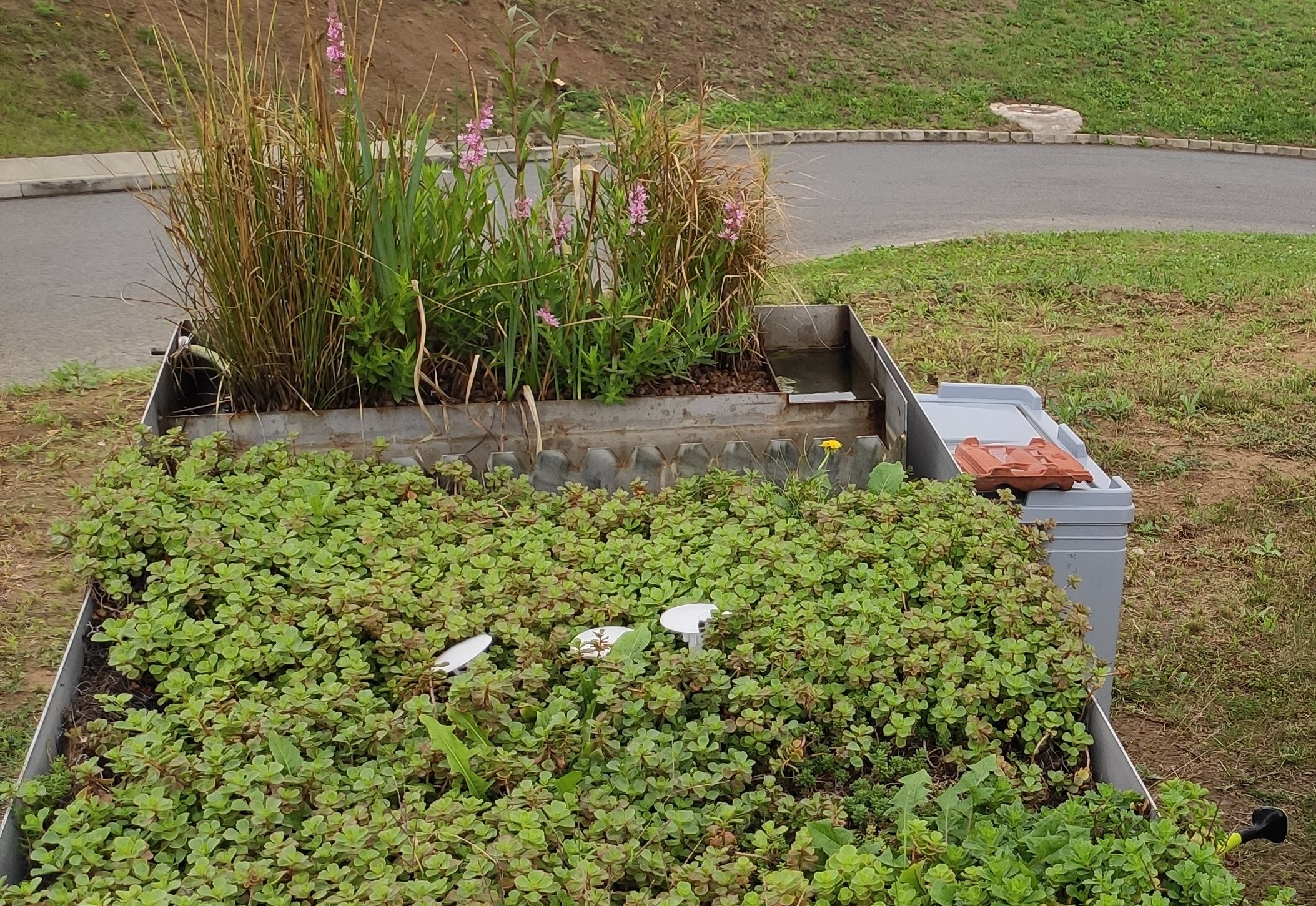Experts from CTU UCEEB have completed the next stage of development of an experimental wetland extensive roof concept that
involves the use of recycled materials and grey water. They have presented the results in the Journal of Environmental Management
and are now developing them further into a full-scale application for commercial use.
The implementation of green roofs requires large amounts of virgin material, especially for the construction of the growing
medium layer. In addition, their irrigation with potable water is uneconomical and unsustainable. Therefore, a new hybrid
green roof system designed by researchers from the
Urban Ecohydrology team of the CTU UCEEB during the implementation of the REVOZIM project (Recycling
Water and Waste in Urban Green Infrastructure), incorporates recycled materials into the growing media and uses grey water
for irrigation, in accordance with the principles of circular economy.
The concept of the hybrid roof and the new growing media has been validated by measuring the hydraulic and thermal properties
directly on the experimental beds and also through laboratory analysis. The growing media supplemented with recycled materials
developed within the REVOZIM project had hydrophysical properties comparable to commercially available growing media without
recycled materials. In addition, vegetation in the bed supplemented with biochar made from pyrolysed sewage sludge showed
more vigorous growth due to the available nutrients.
Observations made during one growing season from June to October and a ten-day intensive water quality monitoring campaign
during September 2020 showed that the constructed wetland significantly reduced total nitrogen and orthophosphate concentrations
in the pretreated graywater. Due to the irrigation method used, in which water flowed primarily through drainage mats under
the vegetation media, there was no nutrient leaching from the irrigation water. The concentration of nutrients in the effluent
increased only in response to rainfall.
Odkaz na studii v magazínu Journal of Environmental Management

